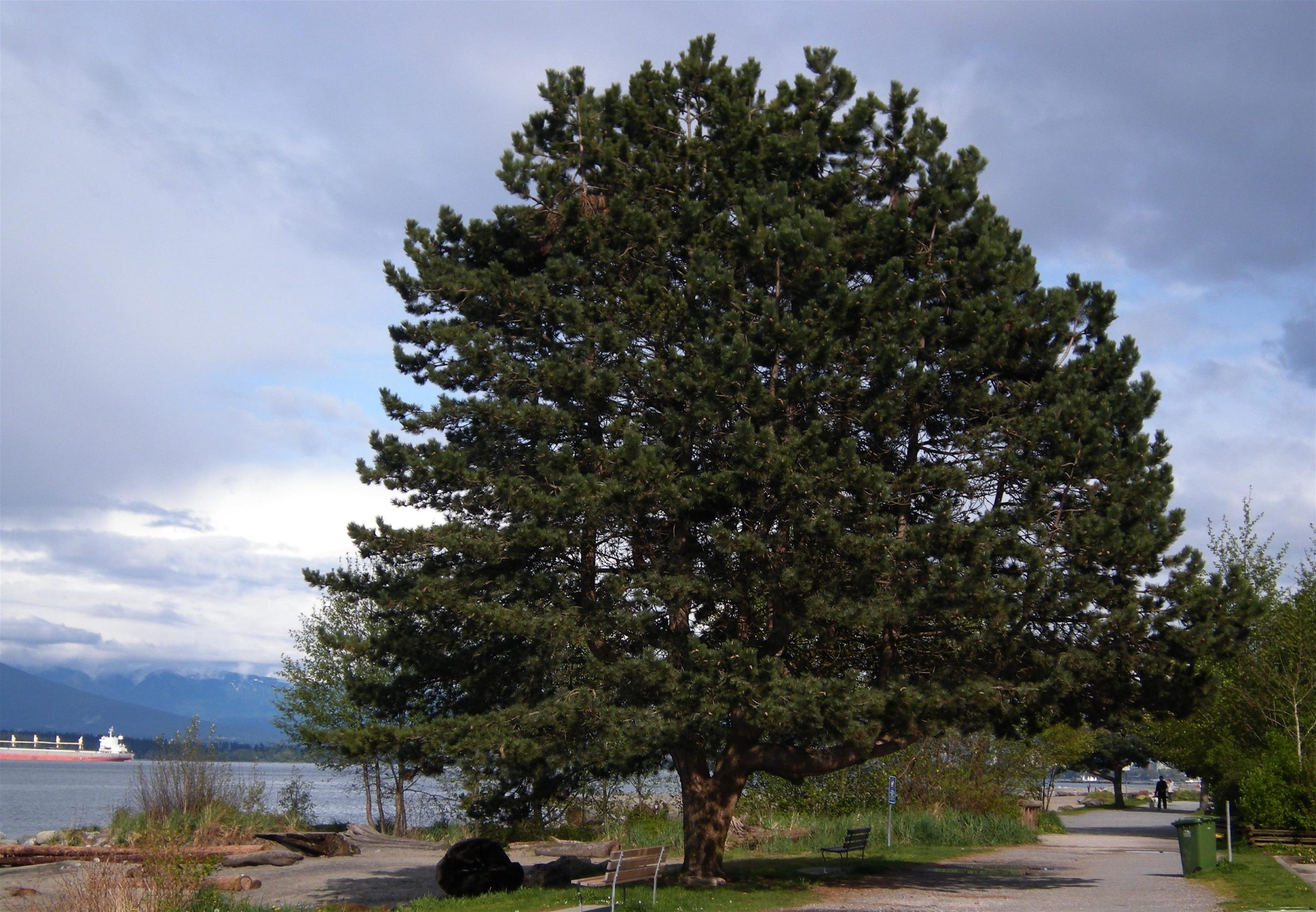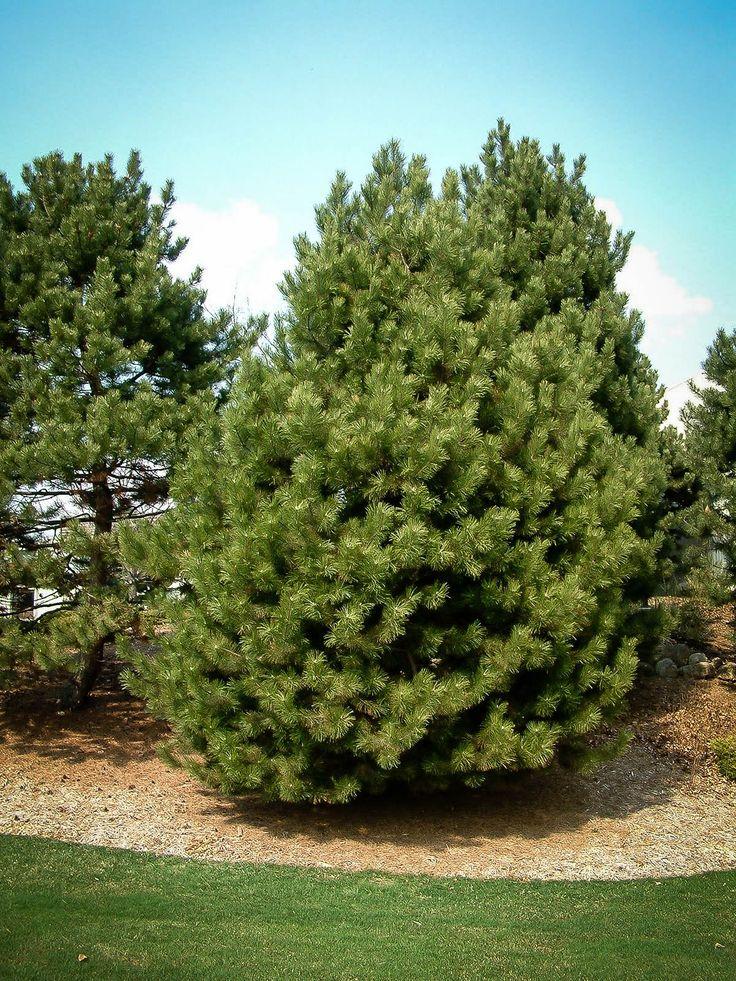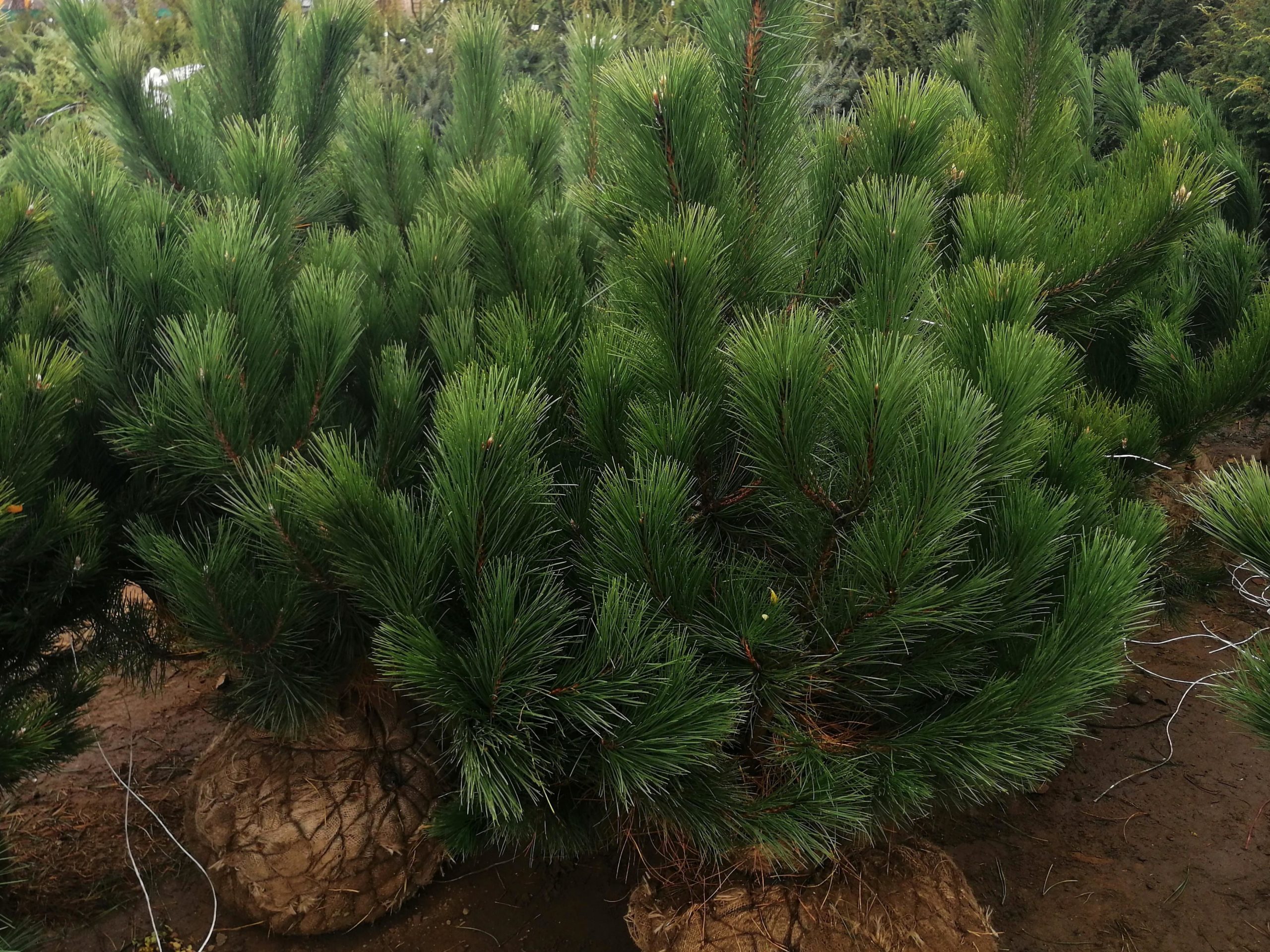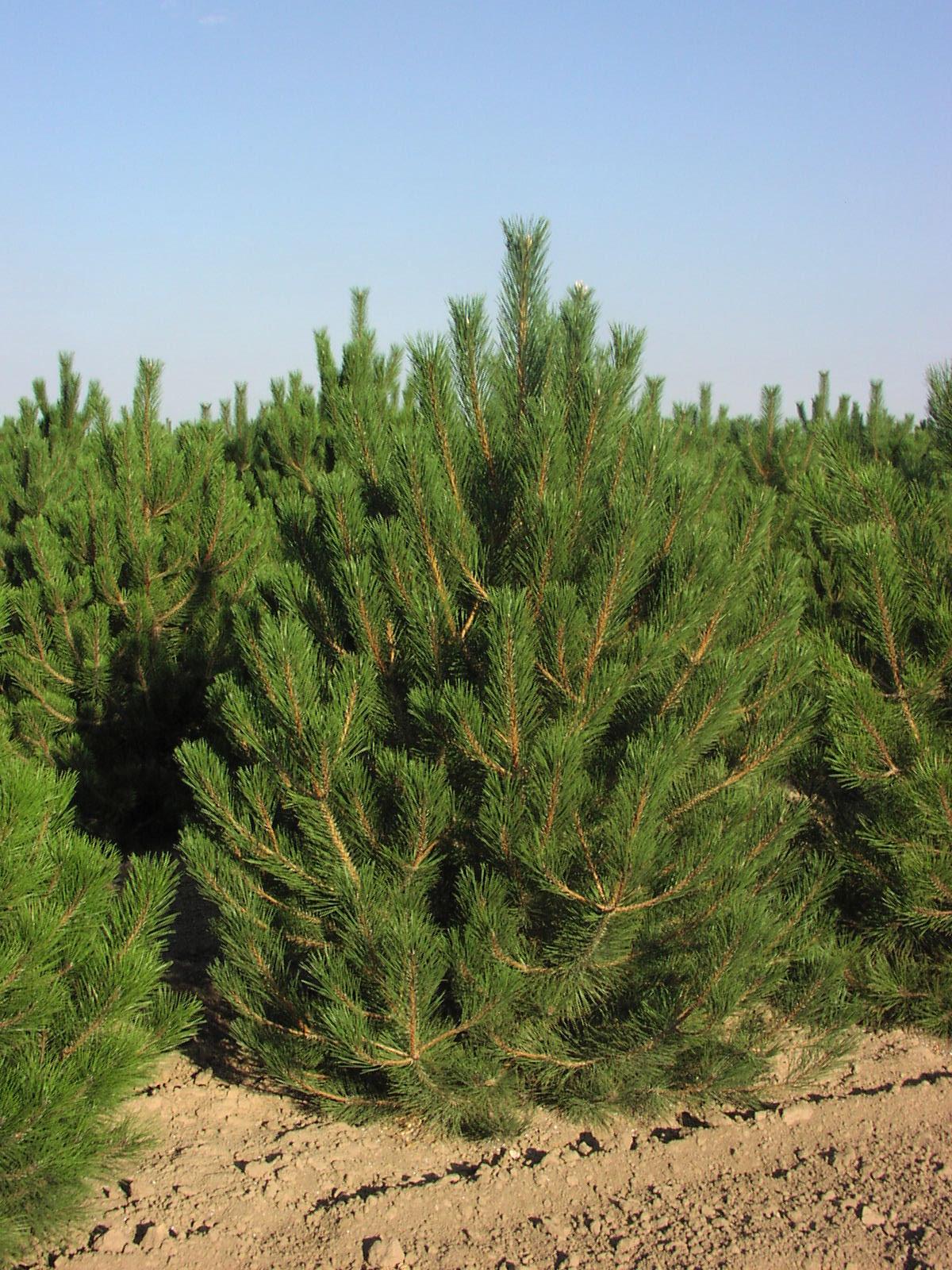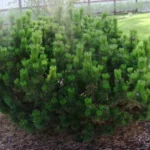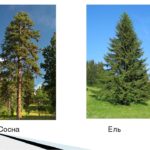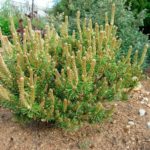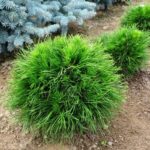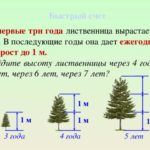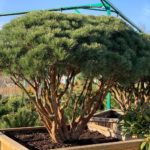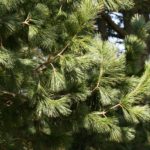Black pine resembles the traditional common variety in appearance. The only difference is the darker needles. The tree is characterized by decorative properties and is often used to decorate summer cottages. In order for the crop to always retain its attractiveness, it is important to carry out planting work correctly and provide it with high-quality care.
Botanical description
Black or Austrian pine is botanically called Pinus Nigra. The height of the crop reaches 20-35 meters.The tree reaches its maximum size at 30 years of age. The plant can reach 200-600 years in age. However, there are also centenarians over 800 years old.
In the first years, the crop has a pyramidal crown. However, as the tree grows, it takes on the shape of an umbrella. In this case, the diameter of the crop reaches 3 meters. The pine has a straight trunk and black bark covered with bright grooves. The plant is often used for decorative purposes.
Despite its high frost resistance, the tree develops slowly in the middle zone and often freezes. At the same time, the crop is highly resistant to drought. The tree is characterized by a developed root system, which sinks quite deeply into the soil. Due to this, the tree is easily supported on mountain slopes.
Black pine is characterized by gray shoots. The needles of a young plant are bright green in color. As it grows, it becomes dark and acquires brownish tints. The needles reach 15 centimeters and are quite thin. They are combined into bundles of 2 pieces. The fruits are presented in the form of yellow-brown cones containing seeds approximately 6 millimeters in size. They open up after 3 years.
Popular varieties
The plant has many varieties that differ in appearance and size. This allows you to choose a crop in accordance with your requirements and use it to decorate your site. The most popular varieties of black pines include the following:
- Nana - reaches a height of 3 meters. At the same time, the tree grows by 5 centimeters per year. It is characterized by a decorative spherical crown, which is almost black in color. The shoots are characterized by vertical growth. Another feature of the culture is the tap root system.This variety is quite light-loving. It does not grow well in the shade and does not tolerate drought.
- Pyramidalis - this plant has a narrow pyramidal crown. In 1 year, the crop increases by 20 centimeters. At the same time, the maximum height of the tree reaches 8 meters, and the diameter is 3. The crop has dark green needles, which grow in bunches consisting of 2 needles. The plant develops normally in any soil, but prefers a lime substrate to a greater extent. The characteristic features of the culture include resistance to frost and polluted air.
- Fastigiata – this type of tree is distinguished by a narrow conical crown. It forms quite powerful shoots and is characterized by slow growth. Over 15 years, the plant increases by 2 meters in height and 50 centimeters in width. The tree is characterized by shiny needles that form panicles. It also has cone-shaped brown cones. The plant is not too demanding on the composition of the soil and lighting. It develops normally in single plantings and is combined with other trees and shrubs.
- Japanese - the average size of this crop reaches 25 meters. It grows mainly in Japanese gardens. In suitable soil, the plant grows up to 40 meters in height. At a young age, the crown has a conical shape, but over time it becomes pyramidal. As the tree develops, the bark becomes darker and becomes cracked. Thanks to its powerful roots, the tree can be used to strengthen plantings. The needles form bunches and are located near the edges of the branches. They are distinguished by their dark green color.
- Helga is a dwarf variety that has a conical shape. It is distinguished by long needles of bright green color. The plant does not grow too quickly.Over the course of 10 years, it increases by 1 meter. In this case, the crown diameter does not exceed 1.5 meters. Ephedra is characterized by resistance to wind, but bright sunlight can cause burns. Loam is considered the most suitable for the plant. However, the tree can also grow in rocky soil.
- Nigra is a fairly attractive ornamental crop that has dark green needles and is undemanding to growing conditions. The plant also has pronounced decorative characteristics. It perfectly complements parks and is suitable for growing in summer cottages.
Growth area
Black Nigra pine or other varieties of trees of this species grow normally in both sunny and shady places. At the same time, the culture grows poorly in places where rock magma accumulates. A well-developed root system helps the crop cope well with drought. The presence of suitable soil and sufficient light leads to the formation of forests.
Most often, black pines are found in the mountains of Europe. That’s why the culture is often called mountain culture. Under natural conditions, the culture grows in Algeria and Mediterranean countries.
Landing
Saplings of small height are often sold in containers. Therefore, they can be planted at different periods - from mid-April to mid-October. There is no need to dig a large hole for this. It should be slightly larger than the dimensions of the container. When planting a crop, you should not deepen it. It is important to ensure that the root collar of the tree is flush with the ground surface.
Aftercare
Pinus Nigra pine is considered very unpretentious. To grow it, it is important to adhere to standard agrotechnical rules. In the first month, the crop needs to be watered once a week.Subsequently, the crop is moistened only during long periods of drought. This must be done within the first 2 years after planting.
Some ornamental species have their own unique care requirements. To achieve success in growing them, it is important to study the instructions when purchasing seedlings.
Pine does not put forward specific requirements for the application of fertilizers. In early spring, the tree should be fed with a combined mineral product. This will help speed up the growth of green mass.
Young trees need to be prepared for winter. To do this, the tree trunk circle needs to be moistened abundantly and covered with a mulch layer. Its thickness should be 15-20 centimeters. Trees should be treated with insecticides before the onset of cold weather. Branches in a spiral must be tied with rope. This will help prevent them from breaking under the weight of snow or wind.
Reproduction methods
It is recommended to propagate the tree by seeds. Black pine cuttings practically do not take root. You can also propagate the culture by grafting. However, only professionals can do this.
To propagate the crop by seeds, you need to collect the cones in the fall and dry them to extract the seeds. In autumn they can be planted directly into the soil. When planting in containers in spring, seeds need to be placed in the refrigerator for 2-3 months. Thanks to stratification, it will be possible to improve their survival rate.
It is recommended to plant seeds in nutrient soil at intervals of 5 centimeters. It is important for them to ensure a stable temperature of +20 degrees and moderate watering. After a year, seedlings can be planted in open soil.
Possible diseases and pests
The plant is resistant to diseases. However, sometimes it suffers from the following pathologies:
- Pine spinner is considered one of the most dangerous. With the development of this pathology, the needles become bright brown. In 1-2 years the tree can completely die. Therefore, treatment must begin immediately. To do this, treat with Bordeaux mixture with a concentration of 1%. The first time this is done is in early May. Then another 2-3 sprayings are required with an interval of 5 days.
- Brown Schutte - most often develops in winter. In this case, the needles become brown and covered with a white coating. To treat pathology, it is worth using the drugs “Rakurs” or “Hom”.
- Shoot cancer - this disease first affects the needles. They droop into umbrella shapes and turn yellow-green. After the snow melts, the needles acquire a red-brown hue. If left untreated, dead spots appear on the bark. To combat pathology, Fundazol is used.
Black pine rarely suffers from pest attacks. However, sometimes it is attacked by pine scale insects. These small parasites live on the underside of needles. As a result, the needles turn brown and fall off. To get rid of pests, trees should be sprayed with Actellik in July.
Benefits of wood
This culture has many varieties that allow you to create attractive compositions. Their value lies in their ability to purify and disinfect the air.
Application in landscape design
The plant is often used in landscape design. It goes well with other conifers. It is also permissible to combine black pine with deciduous shrubs and flowers. This helps create a unique design.
Dwarf plants are often used for landscaping alleys, alpine hills, flower beds, and flower beds. Such pines look great with heather plantings, cereal crops, and stone compositions. For such ensembles, trees up to 4 meters high are used. Particularly successful will be varieties that do not develop very quickly.
Tall trees can be used as tapeworms or combined with other crops. Such trees are often used to delimit zones and design hedges. Many species are undemanding to conditions and develop normally in any type of soil.
The trees look great with deciduous crops and ground cover shrubs. However, they are not recommended to be combined with lilac, birch and bird cherry.
Black pine is an excellent ornamental crop that fits perfectly into a variety of compositions. In order for the plant to develop normally, it is important to carry out planting work correctly and provide it with complete and high-quality care.

